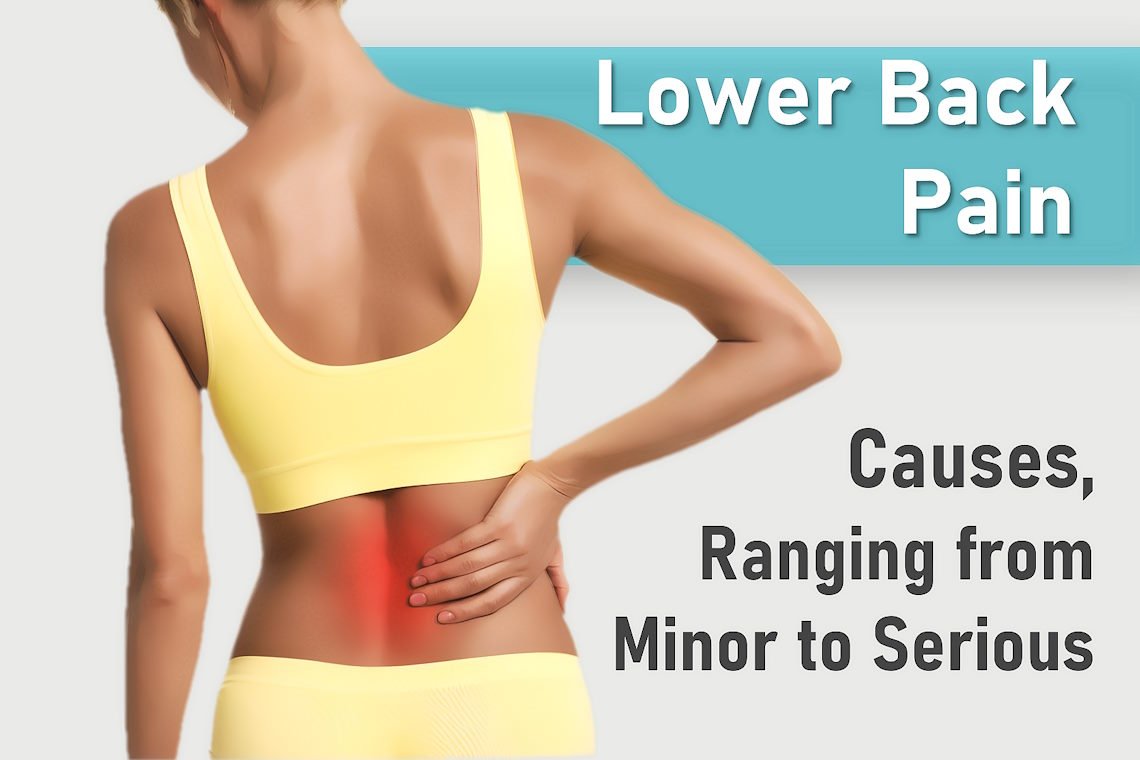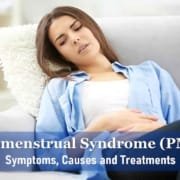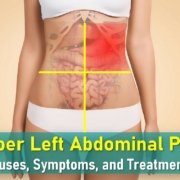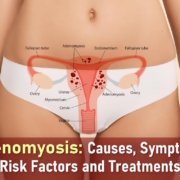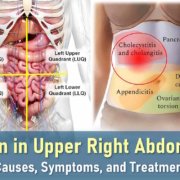Lower Back Pain: Causes, Symptoms, and Proven Relief Methods
What Is Lower Back Pain?
Lower back pain is a common condition characterized by discomfort in the region between the bottom of the ribcage and the top of the buttocks. It can be acute, lasting only a few weeks, or chronic, persisting for months or even years. This condition affects individuals of all ages and can significantly interfere with mobility, daily activities, work performance, and overall quality of life.
There are two primary types of lower back pain:
- Specific Lower Back Pain: This type of pain arises from a clear, identifiable cause, such as a herniated disc, fractures, or issues like muscle strains. It may also occur as referred pain from other areas of the body.
- Nonspecific Lower Back Pain: In most cases, no clear structural cause can be pinpointed. This is the most common form of lower back pain, accounting for approximately 90% of cases. It is often associated with muscle strain, posture, or lifestyle factors.
How Common is Lower Back Pain?
Lower back pain is the leading cause of disability worldwide, with over 600 million people affected globally. This widespread issue places a significant economic burden on healthcare systems and economies, largely due to lost productivity and the costs associated with long-term treatment and rehabilitation.
While lower back pain can occur at any age, its prevalence peaks between the ages of 50 and 55, with women and older adults (aged 80-85) being particularly susceptible. Chronic lower back pain can lead to long-term disability and a reduced ability to perform everyday tasks, thus severely impacting an individual’s quality of life.
Common Symptoms of Lower Back Pain
The symptoms of lower back pain vary widely from person to person. Some individuals may experience a dull, constant ache, while others may encounter sudden, sharp pain. Common symptoms include:
- Pain that radiates into the legs, often referred to as sciatica
- Stiffness and reduced range of motion
- Muscle spasms or cramping
- Difficulty standing, walking, or bending over
- Sleep disturbances and mood changes, such as irritability or anxiety
Lower Back Pain is also classified by the duration of symptoms:
- Acute: Pain lasting less than six weeks
- Subacute: Pain that persists for 6-12 weeks
- Chronic: Pain that lasts longer than 12 weeks, sometimes for years
In some cases, nerve-related symptoms such as tingling, numbness, or weakness in the legs may develop when spinal nerves are compressed or irritated. These symptoms can have a profound impact on daily activities and work performance, potentially leading to long-term limitations if not properly addressed.
What Causes Lower Back Pain?
Lower back pain can result from a wide variety of factors, ranging from sudden injuries to chronic medical conditions. Understanding the causes of lower back pain is essential for developing an effective treatment plan and preventing future discomfort.
Muscle Strains and Sprains
One of the most common causes of lower back pain is muscle strain, often resulting from overexertion, heavy lifting, or sudden awkward movements. When the muscles or ligaments in the lower back are stretched or torn, it can lead to stiffness, muscle spasms, and localized pain. Proper posture and lifting techniques can help prevent these injuries.
Herniated Discs
Spinal discs, which act as cushions between the vertebrae, can be damaged over time. A herniated disc occurs when the outer layer of the disc tears, causing the soft inner material to bulge out. This bulging material can press on surrounding nerves, leading to pain, numbness, or tingling. While a herniated disc can often resolve on its own within six weeks, treatment may be necessary for severe or persistent pain.
Sciatica
Sciatica is a specific type of pain caused when a herniated disc irritates or compresses the sciatic nerve, which runs from the lower spine down each leg. This irritation often results in sharp, burning pain, or tingling sensations that can extend from the lower back into the legs. Sciatica typically affects only one side of the body but can be debilitating without proper treatment.
Spinal Stenosis
Spinal stenosis occurs when the spaces within the spine narrow, putting pressure on the spinal cord and nerves. It is often a result of age-related degeneration, where the spinal discs lose their cushioning ability, and bone spurs or displaced soft tissue begin to compress nearby nerves. Symptoms of spinal stenosis can include:
- Numbness in the extremities
- Muscle weakness
- Painful cramping, particularly when standing or walking for long periods
Many people with spinal stenosis experience worsened pain after standing or walking for extended periods. Treatment options vary depending on the severity of the condition but can include physical therapy, medications, or, in severe cases, surgery.
Spinal Curvature Disorders
Abnormal spinal curvatures, often developing during childhood, can contribute to lower back pain as an adult. These conditions can place additional strain on muscles, tendons, and vertebrae. Common spinal curvature disorders include:
- Scoliosis: A side-to-side curvature of the spine
- Lordosis: An excessive inward curve of the lower back
- Kyphosis: A rounded upper back, commonly referred to as a “hunchback” posture
While some individuals with these conditions may not experience symptoms, others may develop discomfort due to the added strain on the spine. In cases of significant curvature, medical intervention may be required to manage pain and improve posture.
Arthritis and Related Conditions
Several chronic inflammatory conditions can lead to persistent lower back pain. These include:
- Arthritis: Inflammation of the joints, which can cause stiffness, pain, and swelling in the lower back
- Fibromyalgia: A condition characterized by widespread musculoskeletal pain, often accompanied by tenderness in specific points
- Spondylitis: An autoimmune form of arthritis that causes inflammation in the spine, potentially leading to stiffness and pain
- Spondylosis: Age-related wear and tear on the spine that can result in pain and decreased mobility
These conditions can cause chronic pain and limit movement, making daily tasks challenging for those affected.
Other Medical Conditions
Sometimes, lower back pain is caused by non-spinal health issues that may not be immediately obvious. Following conditions such can also contribute to lower back pain. :
- Kidney infections or stones
- Pregnancy-related changes, such as weight gain and hormonal shifts
- Endometriosis or ovarian cysts, which can lead to referred pain in the lower back
- Uterine fibroids
- Spinal infections or tumors
It is important to consult a healthcare professional for an accurate diagnosis, especially when the pain persists or is accompanied by other unusual symptoms.
Serious Symptoms Requiring Immediate Attention
Certain symptoms may indicate severe or potentially life-threatening conditions. If you experience any of the following, immediate medical attention is needed:
- Cauda Equina Syndrome: A rare but serious condition characterized by loss of bladder or bowel control and numbness in the saddle area (the inner thighs, buttocks, and perineum). This condition requires emergency intervention to prevent permanent nerve damage.
- Spinal Fracture: If you experience pain following a trauma, especially if you have osteoporosis or other conditions that weaken bones, a spinal fracture could be a concern and needs immediate attention.
- Infection or Cancer: Symptoms such as unexplained weight loss, fever, or night pain may indicate a serious underlying infection or cancer, requiring urgent diagnosis and treatment.
- Inflammatory Arthritis: If you experience prolonged morning stiffness lasting more than 30 minutes, this could be a sign of inflammatory arthritis, such as ankylosing spondylitis, and should be evaluated by a healthcare provider.
These serious conditions require immediate evaluation and treatment to prevent further complications.
Diagnosing Lower Back Pain
While most cases of sudden-onset lower back pain are nonspecific and typically resolve with self-care, there are certain circumstances in which medical evaluation becomes necessary. If any of the following occur, it’s important to seek professional medical advice:
- Pain persists beyond a few weeks without improvement
- Symptoms worsen progressively over time
- Neurological symptoms, such as numbness or weakness, develop
- Pain disrupts sleep or does not improve with rest
Prompt evaluation can help rule out serious underlying conditions and ensure appropriate treatment.
When Are Tests Necessary?
For most cases of nonspecific lower back pain, routine imaging tests, such as X-rays or MRIs, are typically not helpful. In fact, imaging may reveal findings that are unrelated to the pain and could lead to unnecessary treatments or procedures. Doctors usually rely on:
- A detailed description of your symptoms
- A thorough physical examination
- A review of your medical history
However, testing may be necessary if there are concerns about:
- Nerve compression (e.g., from a herniated disc or spinal stenosis)
- Structural abnormalities in the spine or other areas
- Underlying systemic illnesses, such as infections, cancer, or inflammatory conditions
Current medical guidelines advise against routine imaging for uncomplicated lower back pain, as imaging tests often identify incidental findings that are unrelated to the pain and can lead to unnecessary interventions. It is crucial to work with your healthcare provider to determine whether tests are needed based on your specific symptoms and medical history.
Treatments for Lower Back Pain
Staying Active
Contrary to older beliefs, bed rest can often worsen lower back pain. Current medical guidelines emphasize staying active and continuing with daily activities as much as pain allows. Some key recommendations include:
- Continue daily routines as much as possible, adjusting for pain tolerance
- Gradually increase movement – mild discomfort during activity is normal and should not be a deterrent
Avoid complete inactivity, as it weakens muscles and can prolong recovery.
Research consistently shows that individuals who stay active during episodes of lower back pain:
- Recover faster than those who rest excessively
- Develop fewer chronic pain issues in the long term
- Have stronger back muscles that help prevent future episodes
Targeted Exercises for Lower Back Pain Relief
Physician-approved exercises and stretches are highly effective in relieving lower back pain and accelerating recovery. These exercises often focus on flexibility, strength, and endurance, including:
- Gentle stretching to improve flexibility and reduce stiffness
- Core-strengthening exercises that support the spine and prevent further injury
- Low-impact activities such as walking or swimming that maintain mobility without straining the back
Many of these exercises can be done at home without the need for special equipment. It’s important to focus on consistency rather than intensity, just 10-15 minutes of exercise daily can make a significant difference.
Medication Options for Pain Management
Over-the-Counter Pain Relievers
For mild to moderate lower back pain, over-the-counter medications can provide effective relief:
- Acetaminophen (Tylenol): Helps reduce pain, though it does not address inflammation
- NSAIDs (ibuprofen, naproxen): These are effective for both pain relief and reducing swelling
- Topical creams/gels: These can be applied directly to the skin for localized relief, often without causing stomach upset
Prescription Options (Short-Term Use)
In cases of severe or acute pain, prescription medications may be necessary on a short-term basis:
- Muscle relaxants: These may be used to relieve severe muscle spasms
- Low-dose opioids: Prescribed only for extreme acute pain, typically for 3-7 days at most
Important Safety Notes:
- NSAIDs may not be safe for people with kidney or heart conditions. Consult with your doctor before use.
- Codeine-based medications can lead to constipation, so it’s important to increase fluid and fiber intake.
- All pain medications work best when taken regularly as directed, rather than waiting for severe pain to set in.
Complementary Relief Methods
Heat Therapy
Heat therapy can provide significant relief for lower back pain by relaxing tense muscles. Common methods include:
- Warm baths or heating pads that soothe tight muscles
- Effective for relieving morning stiffness or before engaging in physical activity
Heat therapy is a simple, accessible option that can be incorporated into your daily routine for pain management.
Sleep Position Adjustments
The right sleep position can help reduce lower back pain, especially during recovery. While firm mattresses were once recommended, modern advice emphasizes comfort and alignment:
- Side sleepers: Place a pillow between your knees to keep your hips aligned and reduce strain on your lower back
- Back sleepers: Try placing a pillow under your knees to relieve pressure on the spine
- Stomach sleepers: Place a thin pillow under your hips to prevent the lower back from arching excessively
These simple adjustments can make a big difference in improving sleep quality and reducing back pain.
Returning to Work
It’s important not to wait for complete pain resolution before returning to work. Early re-engagement helps maintain normal activity levels and often reduces pain perception through distraction. Key strategies include:
- Resuming work early helps preserve regular activity patterns
- Work can serve as a distraction, decreasing the focus on pain
- Consider modifying tasks temporarily, such as taking standing breaks or making ergonomic adjustments to your workspace
Returning to your routine as soon as possible, while taking necessary precautions, can speed up recovery and prevent future issues.
Preventing Lower Back Pain
Lifestyle Strategies for a Healthier Back
Regular physical activity is one of the most effective ways to prevent lower back pain. Maintaining overall fitness is more important than performing specific back exercises. Some tips to help prevent lower back pain include:
- Stay active daily: Engage in low-impact activities like walking, swimming, or cycling to maintain spinal health
- Practice proper body mechanics: Lift with your legs, not your back, and avoid twisting your body while lifting
- Maintain a healthy weight: Extra weight puts unnecessary strain on the lower back
- Engage in core-strengthening activities: Yoga and Pilates are excellent for improving posture and providing support to the spine
In addition, small adjustments such as taking regular standing breaks during desk work and using ergonomic chairs can significantly reduce the risk of developing lower back pain.
Managing Chronic Lower Back Pain
When lower back pain persists beyond six weeks, it is classified as chronic. Chronic lower back pain often involves:
- Fluctuating intensity, with mild daily discomfort and occasional severe flare-ups
- Good days and bad days, rather than constant, severe pain
- The potential impact on sleep patterns and mood, affecting overall well-being
Chronic pain requires a more comprehensive management approach, which may involve physical therapy, alternative therapies, and lifestyle adjustments. Working closely with a healthcare provider can help develop a plan tailored to your needs and provide strategies for managing pain long-term.
Supervised Exercise Programs
Structured exercise programs, typically led by physical therapists, can significantly aid in managing lower back pain. These programs usually span 8-12 weeks and include:
- Aerobic conditioning to improve overall endurance
- Targeted muscle strengthening to support the spine
- Posture training to promote better alignment
- Flexibility exercises to reduce stiffness and improve mobility
These programs teach valuable techniques to manage pain during both exercise and daily activities, helping patients build strength and resilience in the long term.
Mind-Body Approaches
Mind-body therapies can complement physical treatments and help with pain management. Some effective approaches include:
- Cognitive Behavioral Therapy (CBT): A therapeutic technique that helps change pain perception and improve coping strategies
- Mindfulness techniques: Practices that can help reduce stress-related muscle tension and improve emotional well-being
These methods can be especially useful for those dealing with chronic pain, offering relief from both physical and emotional stressors.
Alternative Therapies
Alternative therapies can provide relief for some individuals, though their effectiveness may vary. These options include:
- Acupuncture: Some patients report relief from lower back pain, although evidence supporting its effectiveness is limited
- Massage therapy: Effective in relieving muscle tightness and tension that contribute to pain
While these therapies may offer benefits, it’s essential to consult with a healthcare provider to determine the best course of action.
Medications No Longer Recommended:
- Tricyclic antidepressants (e.g., amitriptyline)
- Gabapentinoids (e.g., gabapentin, pregabalin)
Specialist Pain Management
When standard treatments don’t provide sufficient relief, pain clinics may offer advanced interventions, such as:
- Diagnostic nerve blocks to identify and treat pain sources
- Facet joint injections to reduce inflammation and provide relief
- Multidisciplinary pain programs combining various therapeutic approaches
These treatments can be particularly helpful for managing chronic pain that doesn’t respond to conventional methods.
Lower Back Pain During Pregnancy
Many expectant mothers experience lower back and hip pain due to several physiological changes, including:
- A shifting center of gravity as the baby grows
- Hormone-induced ligament relaxation to prepare for childbirth
- Added abdominal weight that places extra strain on the lower back
There are several safe ways to alleviate lower back pain during pregnancy:
- Modified exercises: Prenatal yoga and swimming are excellent, low-impact choices
- Proper support: Maternity belts can help reduce strain on the back and hips
- Sleep adjustments: Sleeping on your side with a pillow between your knees helps align the hips and reduce discomfort
- Medication safety: Only acetaminophen is generally recommended for pain relief—always consult your OB/GYN before taking any medication
In many cases, pregnant women qualify for priority referrals to physiotherapists for specialized treatment of severe lower back pain.
Final Thoughts
Lower back pain is a common condition, but with the right understanding and treatment strategies, most individuals can find relief. Key takeaways include:
- Movement is medicine: Stay as active as possible to promote healing and prevent stiffness
- Address pain early: Prompt treatment can prevent the development of chronic pain issues
- Seek professional help: If symptoms persist or worsen, consult with a healthcare provider
- Prevention is key: Regular physical activity, maintaining good posture, and using proper body mechanics are essential for preventing future pain
With the right approach, most people can alleviate their lower back pain and return to their regular activities, enjoying improved quality of life.

